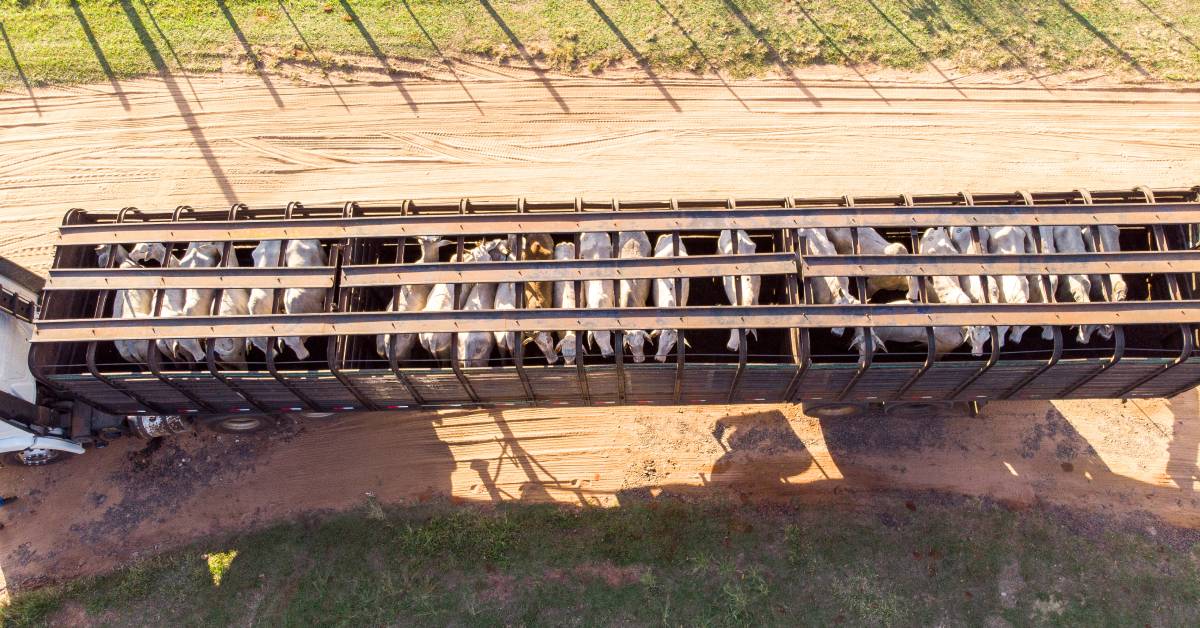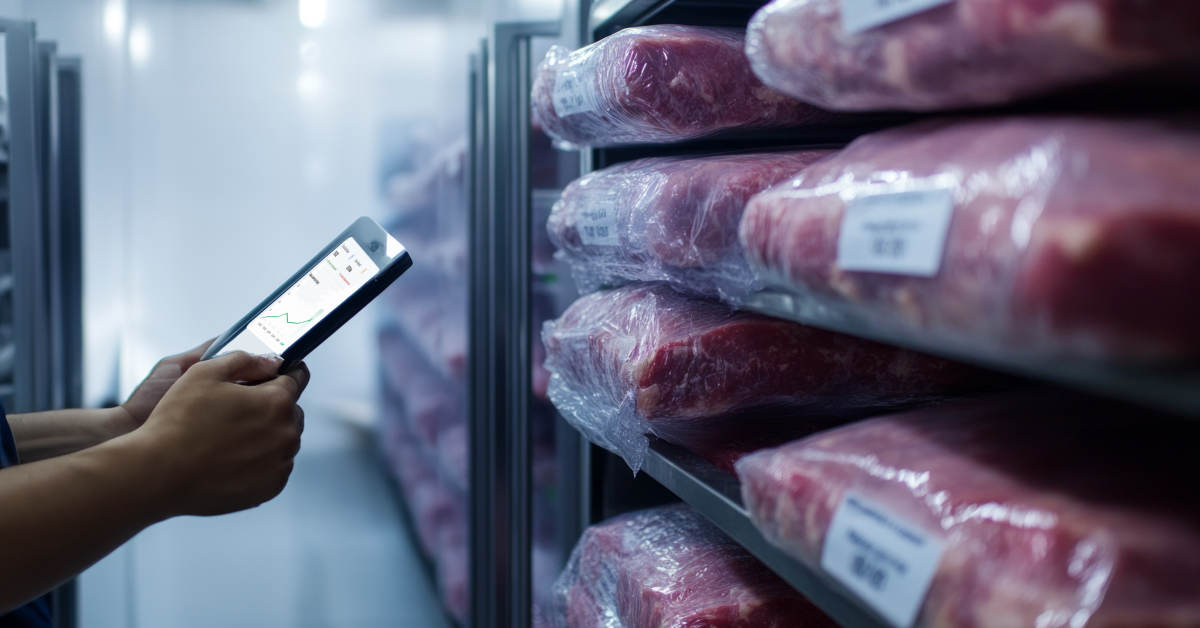Introduction:
The USDA facility requirements for meat processing plants are crucial in ensuring food safety standards and regulatory adherence within the industry. These guidelines establish the necessary conditions and procedures to maintain the quality and safety of meat products, safeguarding public health.
However, meat processing plants encounter several challenges in complying with these USDA requirements. Firstly, the landscape of regulations is dynamic, with ever-changing standards that plants must stay up-to-date with.
This presents an ongoing challenge for plants to adapt their operations accordingly.
Secondly, the USDA sets stringent standards, demanding strict adherence to protocols, infrastructure, and hygiene practices. Meeting these high standards consistently requires dedicated effort.
One of the notable challenges is inspection preparation. Plants must be ready for surprise USDA inspections anytime, necessitating continuous compliance readiness.
To navigate these complexities, many meat processing plants are turning to digital USDA compliance software solutions, like those offered by Folio3.
These platforms help streamline compliance management, providing
- Real-time updates on changing regulations
- Assisting in documentation
- Facilitating inspection preparedness.
In an industry where safety and regulation are paramount, digital solutions offer a way to effectively tackle the challenges of maintaining USDA compliance, ensuring both consumer safety and business success.
Understanding USDA Facility Requirements
The Significance of USDA Facility Requirements
The meat processing sector must comply with USDA facility criteria to maintain food safety, quality, and public health standards. These specifications were carefully created to create hygienic, uniform practices that stop cross contamination, bacterial development, biological contamination and the spread of foodborne illnesses.
These rules ensure that meat processing facilities retain strict control over their operations, from building layout to hygienic practices.
Non-compliance could lead to compromised food safety, potentially causing widespread health issues. Stricter adherence to USDA guidelines translates to safer products on the market, instilling consumer confidence and safeguarding public well-being.
Furthermore, meeting these standards enhances the overall quality of meat products, ensuring consistent taste, texture, and nutritional value.
Ensuring Food Safety with USDA Compliance
Meeting USDA facility requirements is pivotal for upholding robust food safety practices. Vigilant compliance management ensures adherence to stringent regulations, mitigating risks associated with contamination and foodborne illnesses.
These requirements encompass various aspects, from facility design to sanitation protocols, guaranteeing comprehensive regulatory adherence.
Effective inspection preparation is facilitated, bolstering readiness for unannounced assessments. Integrating digital compliance solutions streamlines the process, offering real-time updates on evolving regulations and assisting in documentation.
This comprehensive approach maintains consistent food safety, assuring consumers of product quality while safeguarding public health.
Benefits of Meeting USDA Standards
Compatibility with USDA facility criteria comes with three benefits.
- Ensuring that products adhere to strict safety standards first builds brand trust.
- Compliance improves product quality because stringent processes ensure constant flavor, texture, and nutritional value.
- Conformity with regulations is attained, avoiding legal problems and significant fines.
This thorough strategy indicates a dedication to public health and safety while lowering the likelihood of foodborne diseases. In conclusion, adhering to USDA rules positions firms for long-term success in product quality and regulatory alignment in the competitive marketplace.
Key Components of USDA Facility Requirements
Exploring the Core Elements of USDA Facility Requirements
The main components of adhering to USDA facility requirements are:
Sanitation practices:
Sanitation ensures cleanliness to prevent contamination.
Equipment standards:
Equipment standards guarantee proper functionality and safety
Hygiene protocols:
Hygiene protocols involve personnel practices to maintain a sanitized environment.
Diligent record-keeping:
Accurate record-keeping documents compliance efforts, aiding in inspections.
These components collectively ensure food safety, quality, and regulatory adherence in meat processing plants, safeguarding public health and product integrity.
Importance of Sanitation and Hygiene Practices
It must be maintained to keep an area clean and hygienic to meet USDA standards. It guards against bacterial development, cross-contamination, and foodborne diseases. The quality and safety of meat products are guaranteed in a spotless environment.
Meat processing facilities preserve public health, abide by legal standards, and uphold consumer confidence by employing stringent cleanliness procedures. A clean atmosphere is essential for creating safe and high-quality food products as well as being required by regulations.
Equipment and Facility Standards for Meat Processing
The USDA outlines specific equipment and facility requirements to guarantee food safety. To prevent contamination, these guidelines dictate equipment design, maintenance, and material selection.
Facility requirements cover layout, ventilation, and waste disposal to create a safe processing environment. Adhering to these standards ensures that equipment and facilities don’t compromise product integrity, mitigating risks and upholding the highest food safety standards.
Common Challenges in Meeting USDA Facility Requirements
Identifying Challenges in Compliance
Managing complex rules, preserving consistent practices, and adapting to changing requirements are just a few difficulties in navigating food safety documentation standards. To avoid problems with non-compliance, regulatory compliance needs attentiveness.
Continuous preparation is required to prepare for food safety inspections.
Despite these difficulties, digital compliance solutions simplify the procedure by assisting with compliance administration, real-time updates on standards, and inspection planning.
Overcoming these obstacles demonstrates the commitment to strict food safety standards by guaranteeing regulatory compliance and maintaining consumer confidence and product safety.
Navigating the Complexities of Regulatory Adherence
USDA regulations are constantly changing, making them difficult to understand and implement. To stay compliant, one must maintain ongoing awareness due to the dynamic nature of regulatory changes.
It can be challenging to interpret dense legal jargon, and incorporating new regulations into running processes can be challenging. Adjusting operations, procedures, and personnel training to match evolving standards takes a lot of work.
Furthermore, misunderstandings or misinterpretations may unintentionally result in non-compliance.
The complexity of these changing rules highlights the need for strong compliance management systems and industry knowledge to successfully traverse the complexities, assuring sustained adherence and the highest standards of food safety in a regulatory environment that is constantly changing.
Preparing for Successful Facility Inspections
Preparing meat processing plants to excel in USDA inspections requires a strategic approach. Regularly performing food safety audits and adherence to evolving regulations are fundamental. Maintaining meticulous documentation of practices, training, and maintenance schedules bolsters transparency.
Employee training ensures everyone understands their role in compliance. Leveraging digital compliance solutions provides real-time updates.
Cultivating a culture of continuous improvement and preparedness by conducting mock inspections and fostering open communication fosters readiness.
By implementing these strategies, meat processing plants can confidently face USDA inspections and demonstrate their commitment to upholding the highest food safety standards.
Introducing EcoDocs: Streamlining USDA Compliance Efforts
An advanced digital food safety compliance software will simplify USDA compliance administration. This cutting-edge system proves essential in food safety standards and regulatory conformity.
EcoDocs simplifies adhering to constantly changing rules by facilitating inspection preparation and documentation. With the help of this digital USDA compliance software solution, meat-processing facilities can easily uphold the highest standards for food safety.
With the help of EcoDocs, meat processing facilities may successfully negotiate regulatory compliance difficulties with precision, confidence, and efficiency, eventually ensuring customer safety and a profitable business.
Managing Records and Documentation with EcoDocs
EcoDocs plays a major role in providing accurate and accessible documents that adhere to USDA regulations. This electronic compliance solution serves as a thorough archive for all compliance-related information.
It makes it easier to capture important information, from equipment maintenance to hygiene regulations, by automating documentation processes.
Regarding USDA inspections, EcoDocs enables meat-processing facilities to quickly find the required documents, demonstrating high readiness and compliance with rules.
Because of the system’s accessibility and organization, it is possible to monitor food safety standards effectively, allowing plants to confidently demonstrate their dedication to quality, safety, and regulatory compliance.
Scheduling and Tracking USDA Inspections
EcoDocs proves invaluable in facilitating inspection processes through its robust capabilities. The platform assists in scheduling inspections, ensuring optimal preparedness. It simplifies the preparation of required documents, streamlining the often complex task of assembling necessary paperwork.
EcoDocs excels in organizing inspection data and providing a centralized repository for records, reports, and documentation. This systematic approach enhances efficiency during inspections, as meat processing plants can readily access and present the essential information needed for compliance.
Ultimately, EcoDocs elevates inspection readiness, enabling businesses to navigate regulatory requirements with precision and professionalism.
Bridging the Gap with EcoDocs: Realizing Compliance Goals
With the transformative potential of EcoDocs, meat processing factories can easily bridge the gap between statutory requirements and operational execution. By streamlining the procedure, this creative solution harmonizes compliance objectives.
EcoDocs ensures that everyday procedures comply with legal requirements by automating documentation. It provides a useful way to keep track of, document, and report important issues, including cleanliness and equipment upkeep.
EcoDocs fills the gap and ensures that regulatory aspirations and actual actions are in sync, with its real-time updates, simplified data management, and inspection-ready capabilities.
EcoDocs equips meat processing factories with the tools they need to not only meet compliance standards but surpass them, ensuring the quality of the final product, the integrity of the industry, and the efficiency of operations.
Conclusion:
This blog post covered the critical significance of adhering to USDA facility requirements within the meat processing industry. These guidelines are the bedrock of food safety and quality and are vital for public health.
Throughout the discussion, we’ve highlighted the challenges that meat processing plants encounter in staying compliant – from dynamic regulations to stringent standards and inspection readiness.
Enter EcoDocs, the revolutionary online compliance tool. This platform is a compass for overcoming these obstacles and closing the compliance gap. Plants can streamline documentation, keep abreast of changing requirements, and always be prepared for surprise inspections, thanks to EcoDocs.
EcoDocs changes the compliance process by centralizing documents, automating paperwork, and improving overall compliance management. It gives meat processing software facilities the tools to meet USDA criteria, maintaining worker safety, consumer confidence, and the sector’s reputation.
FAQs
What are the primary USDA facility requirements that meat processing plants must adhere to?
To maintain food safety and regulatory compliance, meat processing facilities must follow USDA facility criteria, which include sanitation, equipment standards, hygiene procedures, and record-keeping.
How often are USDA inspections conducted, and what should we expect during an inspection?
Periodic USDA inspections are carried out and might be planned or unplanned. During inspections, expect rigorous assessments of the facility’s cleanliness, equipment upkeep, record-keeping, employee hygiene procedures, and compliance with food safety regulations.
Can digital solutions like “EcoDocs” truly replace traditional record-keeping methods?
Digital solutions like “EcoDocs” can significantly enhance traditional record-keeping methods, streamlining documentation, improving accessibility, and providing real-time updates.
While replacing them only partially, digital solutions offer efficiency, accuracy, and convenience that can greatly surpass traditional approaches in managing compliance and regulatory requirements.
Is training required for staff to use “EcoDocs” effectively?
Yes, training is essential to ensure effective utilization of “EcoDocs.” Familiarizing staff with the platform’s features and functionalities will maximize its benefits, streamline processes, and enhance compliance management within meat processing plants.
How has the adoption of “EcoDocs” benefited other meat processing plants in terms of USDA compliance?
Other meat processing facilities seeking USDA compliance have found implementing “EcoDocs” to benefit greatly. It simplified compliance management by centralizing data, automating documentation, and delivering real-time regulatory updates.
As a result, there has been better adherence to food safety rules, quicker access to necessary information, and increased inspection readiness.
The platform’s effectiveness and efficiency have improved business processes, increased consumer confidence, and established these facilities as market leaders dedicated to upholding the highest USDA compliance standards.







